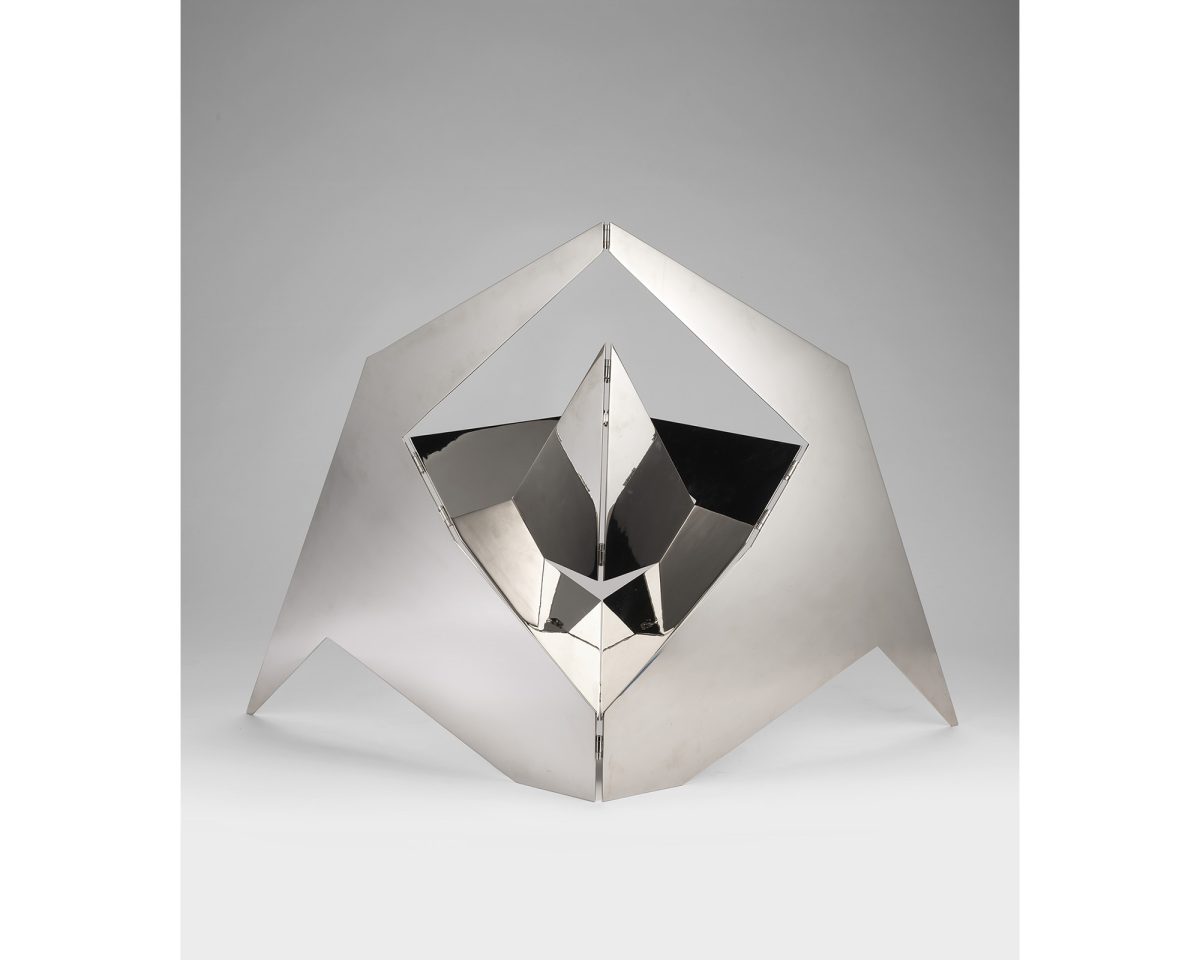
One of the most important exponents of art, design, and graphics of the twentieth century, Bruno Munari (Milan 24 October 1907 – Milan 29 September 1998) began to work at the age of eighteen in various graphics studios, thanks to the help of an uncle who was an engineer.
As a very young man in Milan, Munari took part in the second generation of Futurists with whom he exhibited in the Galleria Pesaro in numerous group shows, such as those in 1927, 1929, 1931, and 1932. In 1929 he opened his own graphics and advertising studio and, in 1930, he made the first mobile in history, an aerial sculpture that opened the way to his “useless machines”. In fact, this area of interest was to continue in 1933 with the creation of suspended objects harmonically related together by their size, forms, and weight. Between 1930 and 1936 he took part in some editions of the Venice Biennale, the Rome Quadriennale, and the Milan Triennale. Besides his art work, Bruno Munari continued with his graphics work. He worked at Mondadori as art director and, in 1948 together with Gillo Dorfles, Gianni Monnet, Galliano Mazzon, and Atanasio Soldati, he founded the Movimento Arte Concreta, MAC, a novelty for Italian art. This movement represented and proposed an interdisciplinary vision of the arts, and put on the same plane painting, architecture, sculpture, and design. These were fruitful years for Bruno Munari, years in which he collaborated with numerous magazines, amongst which “La Lettura”, “Natura”, “Settebello”, and “L’Ufficio Moderno”, he also illustrated Futurist books, including “Il Poema del vestito di latte” by Filippo Tommaso Marinetti, and designed adverts for Campari. In 1942 he published “Le machine di Munari” and, in 1945, a series of innovative books for children inspired by the infancy of his son Alberto, born in 1940.
Over time Munari progressively distanced himself from the Futurist groups and maintained an autonomous position with respect to other Italian art groups. In 1950 he presented his “Libri illegibili”, Illegible Books, consisting of purely visual stories, and his first series of “Negativi-positivi” paintings, abstract works that were drawn contemporaneously in “two parts” and which were exhibited for the first time at the Libreria Salto and then in Paris in 1951, Milan (1952), and Rome (1953).
In 1952 he received the first requests from the industrial sector for serially produced objects, and he made two toys in foam rubber, one of which was awarded the Compasso d’oro prize in 1954. Bruno Munari’s involvement in design became continuous after 1957 when he began to collaborate with the Danese firm in Milan. The following year, Munari created a sign language by modelling the tines of forks and, in the same year, presented his travelling sculptures, a new look at the concept of sculpture, the symbol of the new globalised world, where even sculpture was no longer monumental but was in a “journeying” format. During the 1950s his fame travelled beyond national boundaries and his “Useless machines” were exhibited in Europe and America. In 1962, in the Olivetti store in Milan, he organised a famous show about Programmed Art. In 1967 he was invited by Harvard University to hold a course on visual communications. In 1968 he took part in the Milan Triennale, and continued with his studies of the world of childhood. And it was for children that, in 1970/71 he designed for the Robots firm his famous “Abitacolo”, a transformable inhabitable space. In the Brera gallery, Milan, in1977 he began to plan a workshop for children, the acme of his interest in childhood. In 1979 he was awarded a further Compasso d’oro for “Abitacolo”, and then received a mention of honour from the New York Academy of Sciences; lastly, in 1989 he was awarded an honours degree in architecture by Genoa University.
In the 1980s and 1990s Munari’s creativity not only did not diminish but increased and was concretised in new and different series of works, such as his “Sculture filipesi”, 1981, his 1989 rotors, his high tension structures in 1990, and the large Weathering steel sculptures exhibited in Naples, Cesenatico, and Riva del Garda. One of his last projects was for a “free time” watch designed for Swatch in 1997.
The artist died in Milan on 30 September 1998.
Works

Scultura da viaggio
1979
silver metal
cm 50 x 38 x 60
For more information, please contact the gallery
Scultura da viaggio, 1979
